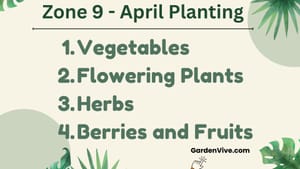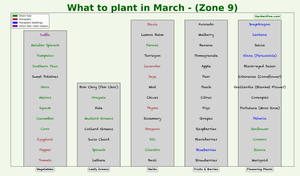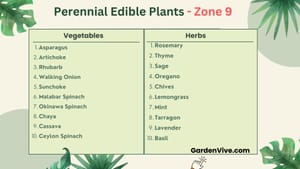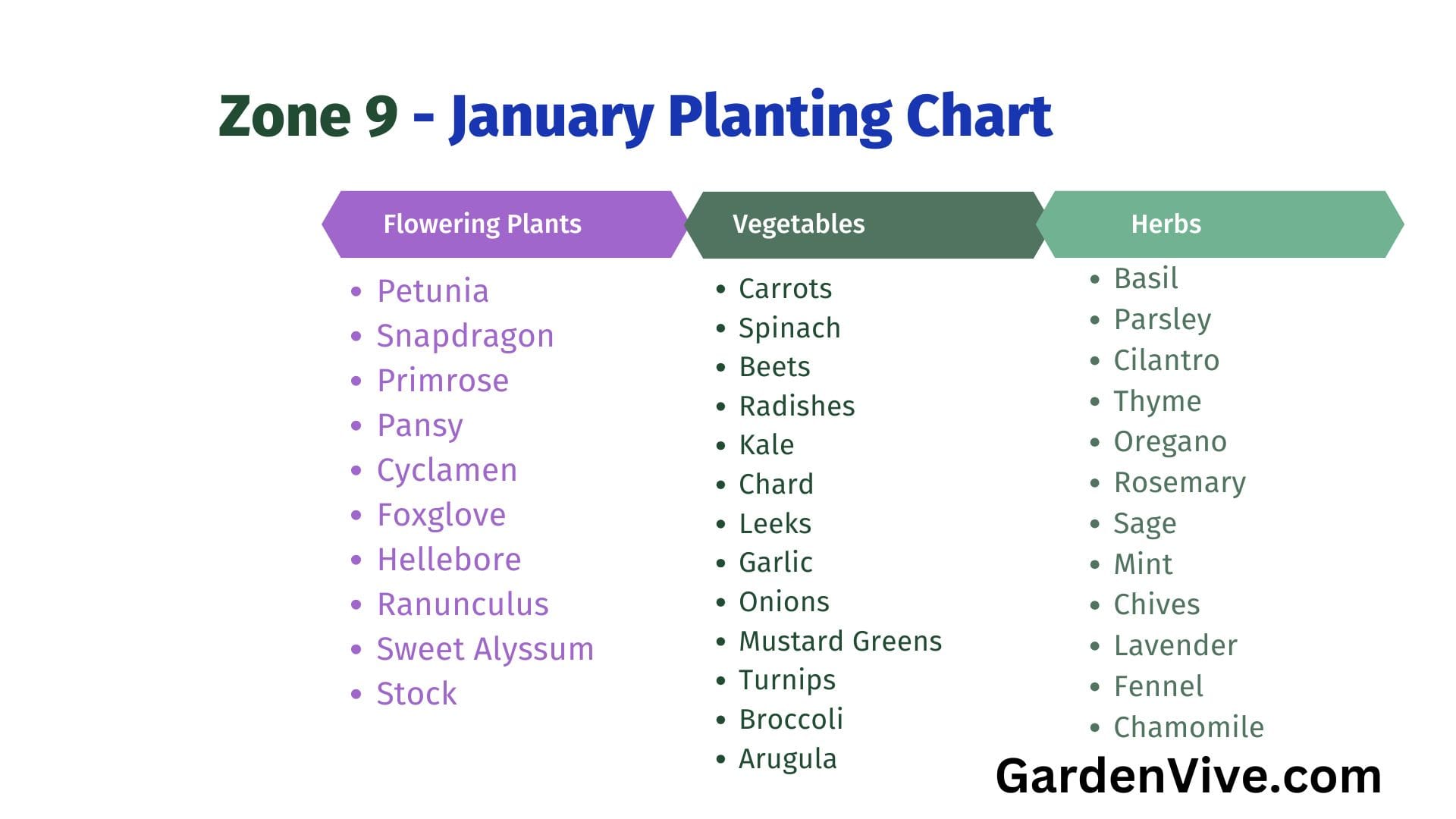
We the gardeners (especially new gardeners) love to follow some sort of planting charts or schedules. All the major planting charts suggest the best planting time. Spring gardening and fall gardening are the two major terms. But the restless gardeners still have options to plant a lot of veggies and flowering plants in January. In this article, you will find what to plant in January in Zone 9.
Update: Ignore Basil from the herb section in the featured. It's a heat-loving plant and try not to plan in January.
Zone 9 January Planting Guide
I am separating my chart into several categories:
- Flowering plants
- Vegetables
- Leafy Greens
- Herbs
- Starting from seeds (with transplantation time)
Note: The weather might change all of a sudden. If you face a sudden freeze, you can cover your plants or bring the potted plants inside. You can skip planting at those harsh moments.
You can check: when to bring plants inside in winter and when to cover plants
I love creating planting charts and here's a helpful resource for my readers: Zone 9 Planting Charts for the Whole Year ( You will love it )
Let's start with Flowering plants and then we will go for veggies and herbs.
I am not considering the best planting time here. The plants I am adding here in my charts can be planted in January and with proper care, they will perform well. (That does not mean January is the best planting time for these plants)
Flowering Plants to be planted in January
| Plant Name | Flowering Season | Bloom Color | Perennial or Annual |
|---|---|---|---|
| Petunia | Spring to Fall | Pink, Purple, White | Annual |
| Snapdragon | Winter to Spring | Yellow, Red, White | Annual |
| Primrose | Winter to Spring | Yellow, Pink, Purple | Perennial |
| Pansy | Winter to Spring | Purple, Yellow, White | Annual |
| Cyclamen | Winter | Pink, Red, White | Perennial |
| Foxglove | Spring to Summer | Pink, White, Purple | Perennial |
| Hellebore | Winter to Spring | White, Pink, Purple | Perennial |
| Ranunculus | Spring | Red, Yellow, White, Pink | Perennial |
| Sweet Alyssum | Spring to Fall | White, Purple, Pink | Annual |
| Stock | Winter to Spring | Pink, White, Purple | Annual |
If you love to grow flowers for their fragrance, you can go for Sweet Alyssum.
Sweet Alyssum: sweet honey-like fragrance. But I love these small blooms especially the white one.
Curious to see how mine is doing?
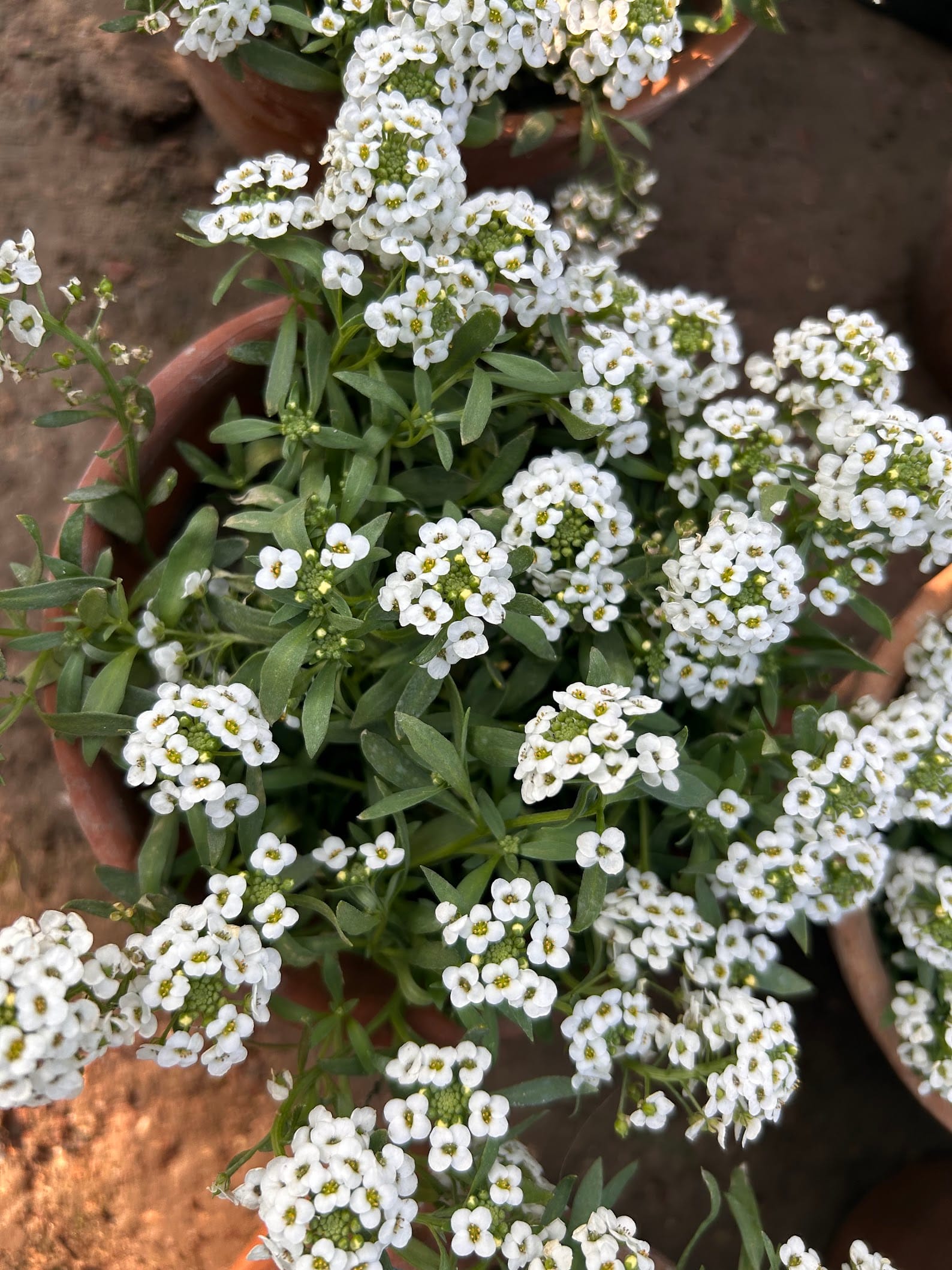
Petunia: Among all the color variants I love the purple one the most. Pinching at the early stage can increase the number of flowers.
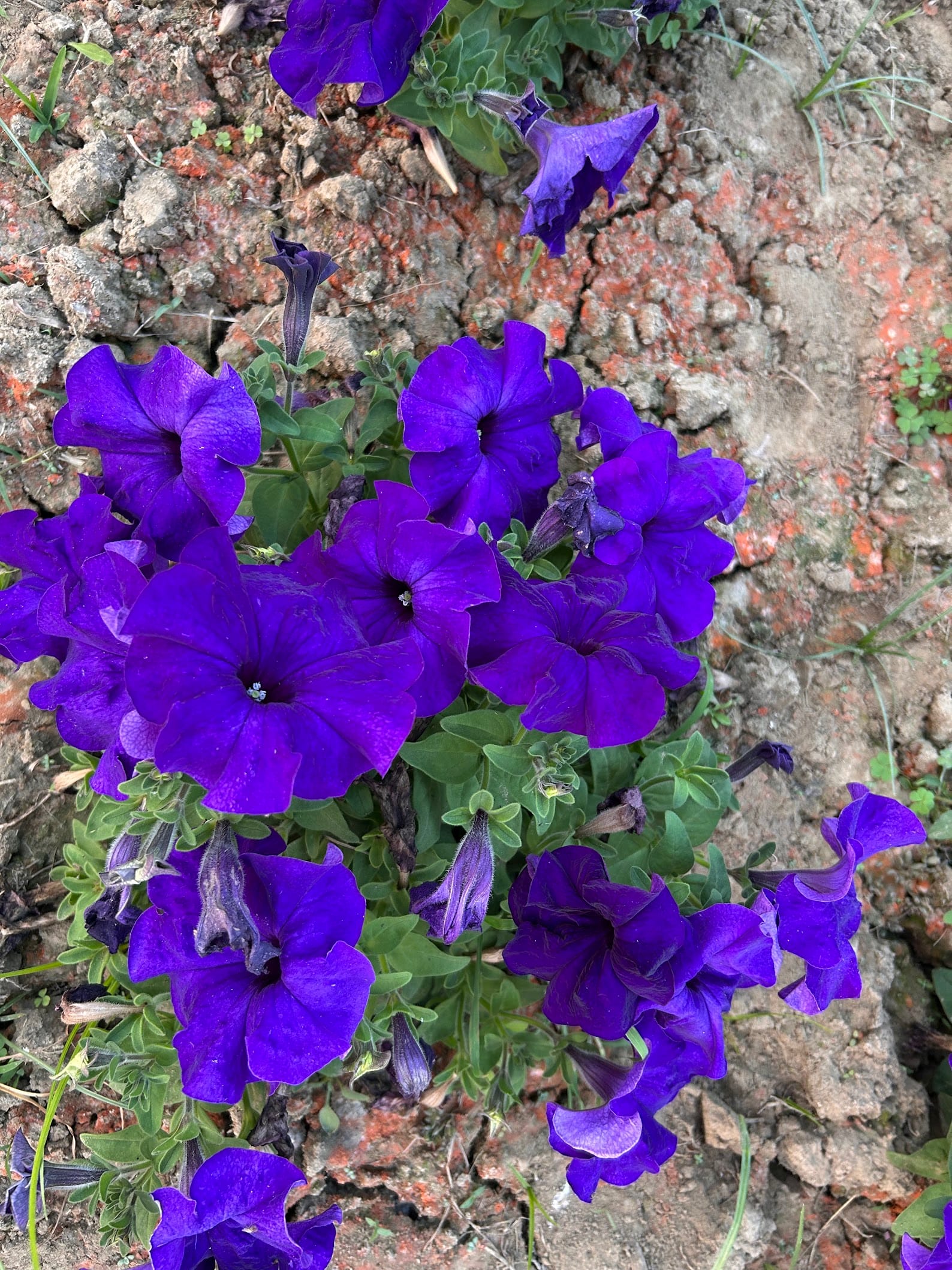
Vegetables and Leafy Greens
| Plant Name | Planting Method | Harvesting Time (Days) | Type |
|---|---|---|---|
| Carrots | Direct sow | 60-80 days | Root Crop |
| Spinach | Direct sow or transplant | 30-50 days | Leafy Green |
| Beets | Direct sow | 50-70 days | Root Crop |
| Radishes | Direct sow | 20-30 days | Root Crop |
| Kale | Direct sow or transplant | 50-75 days | Leafy Green |
| Chard | Direct sow or transplant | 50-60 days | Leafy Green |
| Leeks | Direct sow or transplant | 100-120 days | Vegetable |
| Garlic | Plant cloves | 180-210 days | Vegetable |
| Onions | Direct sow or sets | 90-120 days | Vegetable |
| Mustard Greens | Direct sow or transplant | 30-50 days | Leafy Green |
| Turnips | Direct sow | 50-60 days | Root Crop |
| Broccoli | Direct sow or transplant | 60-100 days | Vegetable |
| Arugula | Direct sow | 30-40 days | Leafy Green |
To be honest, all of these can perform better if planted a month earlier, but it's not too late. You can plant these in January.
Before planting do not forget to check the weather forecast. If you see a frost warning, skip planting.
Do you prefer low-effort gardening and want to enjoy harvests for years with just one planting? You can read: Perennial edible vegetables and herbs for Zone 9
If you wish to plant Garlic in January, choose the hardneck one. To protect them from extreme cold, mulch well or use row covers.
Broccoli will not disappoint you unless it gets frostbite.
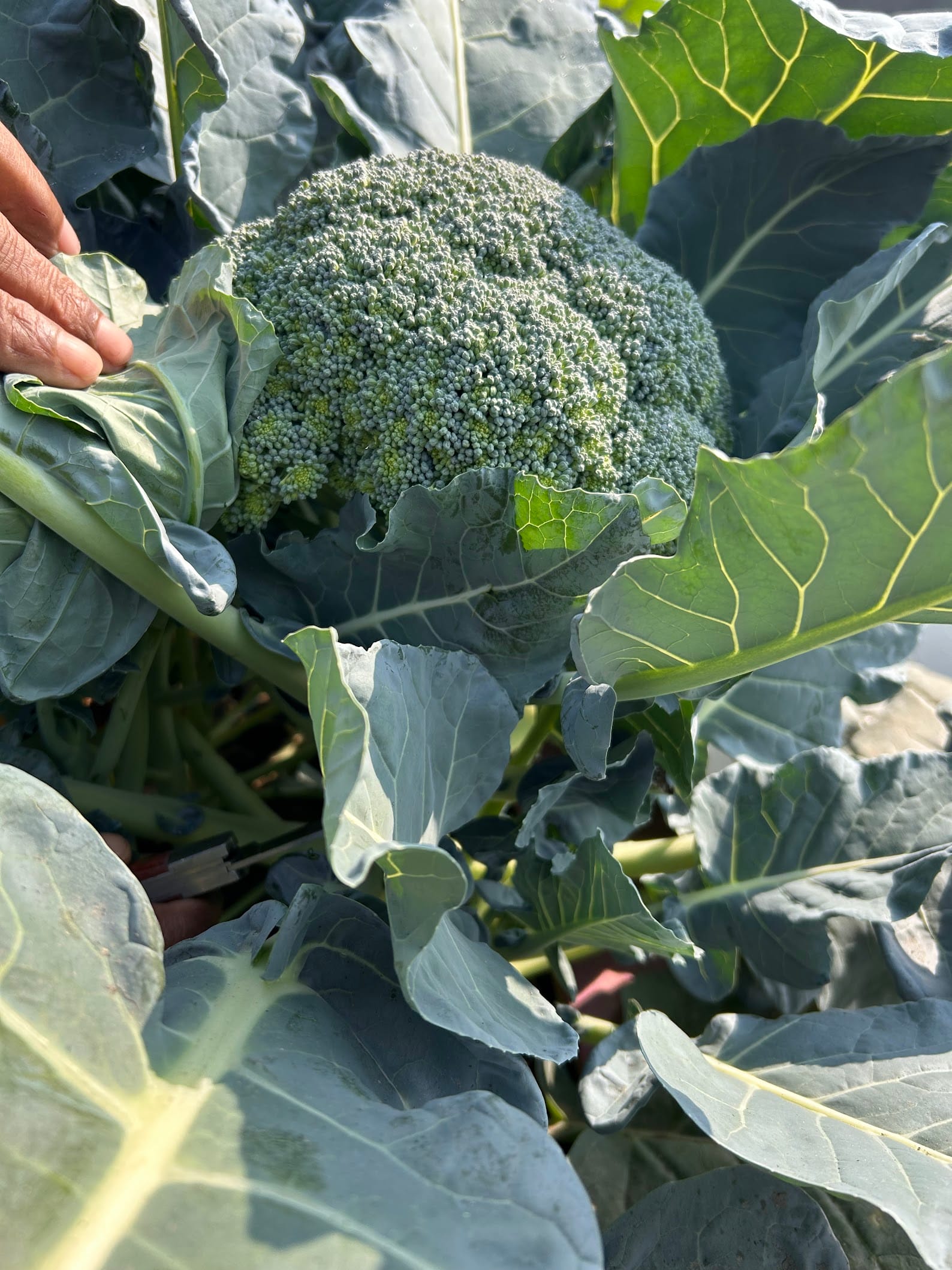
Follow the planting methods, I mentioned in my chart for each plant to get the best results.
Herbs to be planted in January in Zone 9
| Herb Name | Planting Method | Harvesting Time (Days) | Type |
|---|---|---|---|
| Parsley | Direct sow or transplant | 70-90 days | Herb |
| Cilantro | Direct sow | 30-50 days | Herb |
| Thyme | Direct sow or transplant | 90-120 days | Herb |
| Oregano | Direct sow or transplant | 80-100 days | Herb |
| Rosemary | Transplant | 120-150 days | Herb |
| Sage | Direct sow or transplant | 90-120 days | Herb |
| Mint | Direct sow or transplant | 60-90 days | Herb |
| Chives | Direct sow or transplant | 60-90 days | Herb |
| Lavender | Transplant | 120-180 days | Herb |
| Fennel | Direct sow | 90-120 days | Herb |
| Chamomile | Direct sow or transplant | 60-90 days | Herb |
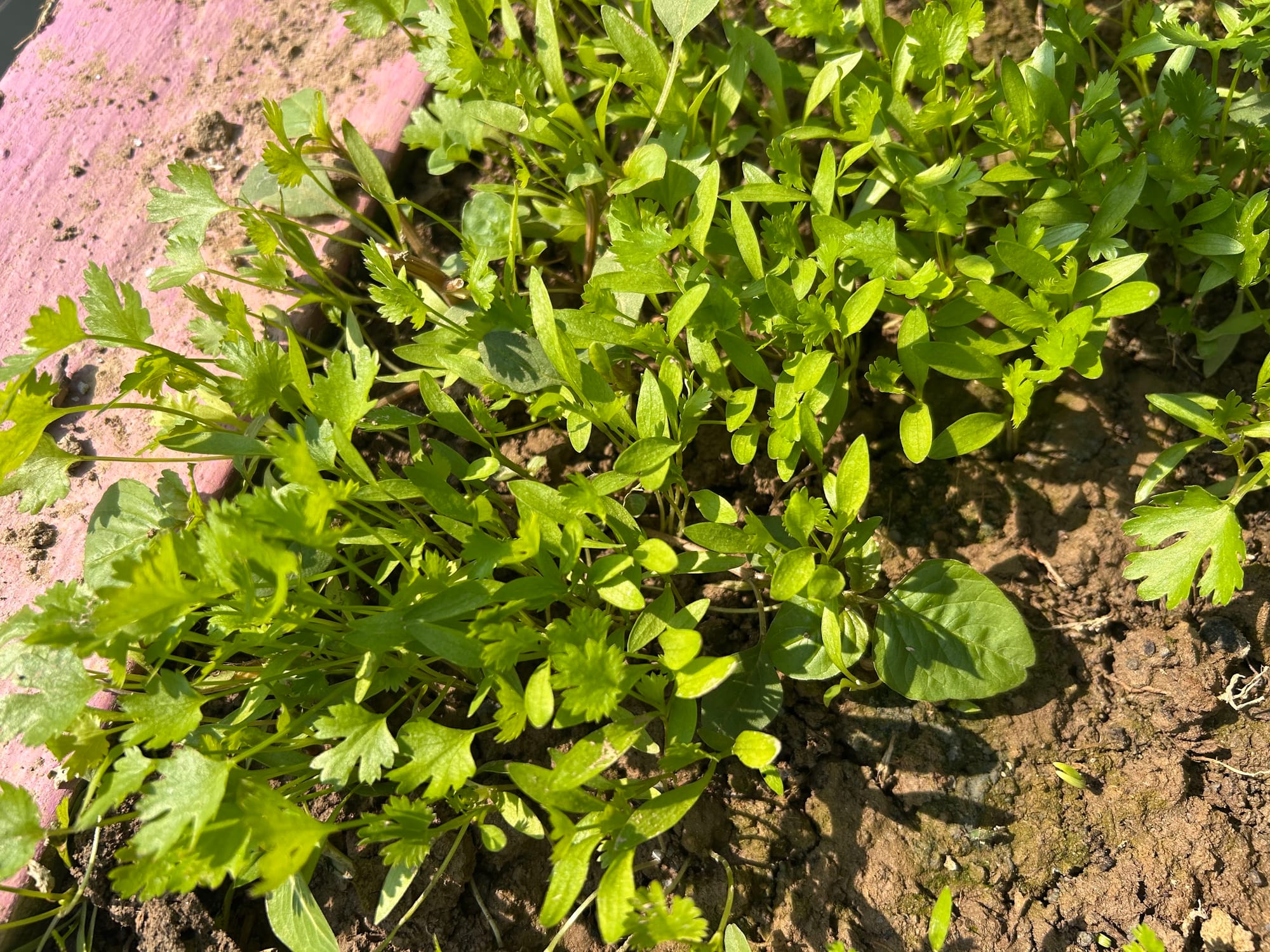
As temp. will rise, and cilantro will start flowering. I love the flavor of cilantro at the early stage.
The harvesting time mentioned in the chart is the first harvesting time.
If you wish you can harvest at the earlier time. I am an early harvester.
What seeds are to be started in January in Zone 9
In this part, I will only focus on vegetables and leafy greens.
I hope this optimal germination temp. addition will help you.
| Plant Name | Optimal Germination Temperature | Germination Time | Transplanting Time | Expected Harvesting Time |
|---|---|---|---|---|
| Tomatoes | 70-85°F (21-29°C) | 7-14 days | 6-8 weeks after sowing (March 1-15) | 60-80 days after transplanting |
| Peppers | 75-85°F (24-29°C) | 7-21 days | 8-10 weeks after sowing (March 15-30) | 70-90 days after transplanting |
| Eggplants | 75-90°F (24-32°C) | 7-14 days | 6-8 weeks after sowing (March 10-25) | 70-85 days after transplanting |
| Broccoli | 65-75°F (18-24°C) | 5-10 days | 4-6 weeks after sowing (February 15-March 1) | 55-75 days after transplanting |
| Kale | 65-75°F (18-24°C) | 5-10 days | 4-6 weeks after sowing (February 15-March 1) | 50-70 days after transplanting |
| Lettuce | 60-70°F (16-21°C) | 7-10 days | 4-6 weeks after sowing (February 15-March 1) | 30-45 days after transplanting |
| Cauliflower | 70-85°F (21-29°C) | 8-10 days | 4-6 weeks after sowing (February 15-March 1) | 55-80 days after transplanting |
| Spinach | 50-70°F (10-21°C) | 6-10 days | 4-6 weeks after sowing (February 1-15) | 35-45 days after transplanting |
| Carrots | 55-75°F (13-24°C) | 10-14 days | Direct sow, thinning at 2 inches apart | 60-80 days after sowing |
| Beets | 50-85°F (10-29°C) | 5-12 days | Direct sow, thinning at 3 inches apart | 50-70 days after sowing |
| Cabbage | 65-75°F (18-24°C) | 7-10 days | 4-6 weeks after sowing (February 15-March 1) | 70-90 days after transplanting |
| Onions | 65-85°F (18-29°C) | 7-15 days | 6-8 weeks after sowing (March 1-15) | 90-120 days after transplanting |
| Swiss Chard | 50-85°F (10-29°C) | 7-14 days | Direct sow or transplant 4 weeks after sowing | 50-60 days after sowing |
Did you read something useful? Here's what you can do to help me:
Subscribe to this site and share with other Zone 9 gardeners. It will help me to create more useful charts for you.

